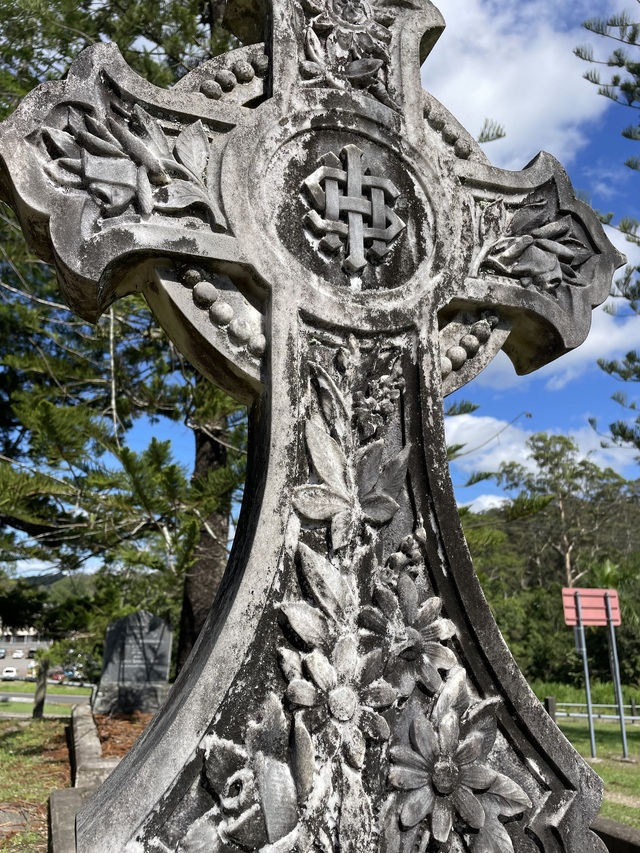Many people drive past the cemeteries that dot the Sunshine Coast without giving them much thought, but tucked away in those shady enclaves lie countless fascinating stories.
These were explored by Historian in Residence, Dr Lisa Murray, who is now sharing their secrets.
The Historian in Residence program, funded by the Sunshine Coast Council Arts and Heritage Levy, aims to lift the cover on some of the little or unknown stories that make up the Sunshine Coast region’s cultural heritage.
Dr Murray was one of two historians to take part in the 2024 Historian in Residence program. Her mission was to uncover the history of Sunshine Coast public cemeteries, their relationship to each other, and with a focus on common themes and unique qualities.
Her research looked at how cemeteries were managed, by whom, rules and regulations, cost of burials, the craftsmen behind the memorials and more.
Fascinating findings in her comprehensive report span three areas, the evolution of cemeteries, histories of all 19 cemeteries, and the best cemeteries to experience funerary culture, landscape and nature.
The district’s first official cemetery, Alexandra Headland Cemetery 1870, no longer exists. Located on what is now the corner of Pacific Terrace and Alexandra Parade, the cemetery was used for just 10 years before it was decommissioned and moved to Buderim.
Buderim residents lobbied the Colonial Secretary in 1880 for the cemetery to close, stating no interments had happened there, however, while there are no burial records, late 19th century surveyor William Pettigrew diaries show at least two infant burials occurred there, with two exhumations later authorised.
Lisa also examined monumental stone masons noting that some monumental masons signed their work – part craftsman’s signature, part advertisement.
The location of signatures varies with signatures found at the bottom of the headstone, on the plinth or stone base of memorials, or on the concrete grave enclosure.
By the 1920s many monumental masons were attaching little tin labels to the concrete enclosure, rather than incising or stamping their name in the concrete.
The monumental mason whose signed work is most widely represented in Sunshine Coast’s cemeteries is Andrew Lang Petrie (1854-1928) from Brisbane. Andrew was the first son of John Petrie (1822-1892) and a third-generation monumental mason.
He worked in Helidon sandstone, white marble (mainly imported from Carrara, Italy) and red and grey granite. His work can be found all over south-eastern Queensland. His business records survive and are held in the Fyer Library at the University of Queensland.
Dr Ken Greenwood was the other 2024 Historian in Residence, studying ‘The lives of the people who lived at Bankfoot House: 1868 – 2002’.
He explored the lives of 17 people who lived in Bankfoot House between 1868 and 2002.
The paper begins with Willian Grigor ‘a farm servant from the highlands of Scotland who ended up owning more than 900 acres of land in Australia’.
Sunshine Coast strong community portfolio Councillor David Law said the research conducted through the program was invaluable to better understanding the region’s heritage.
“The Arts and Heritage Levy has enabled eight historians to undertake a deep dive into the unknown Sunshine Coast,” Cr Law said.
“We’re now looking for the next cohort of qualified and experienced historians and invite them to submit their research topics for consideration.
“Historians will be based at the Heritage Library in Nambour and either Bankfoot House Heritage Precinct or Landsborough Museum.”
There are two contract positions available for qualified and experienced historians or other relevant professionals, with a stipend of $12,500 per historian.
Submissions close 5 August.







